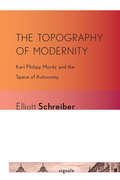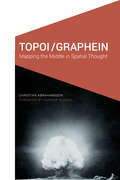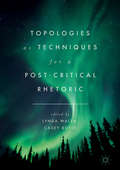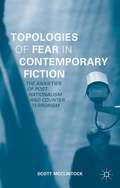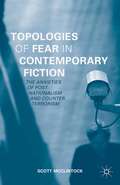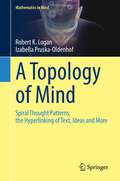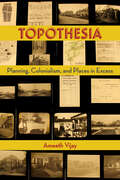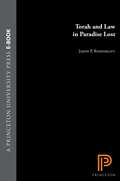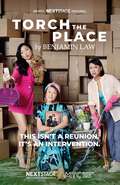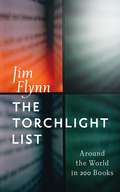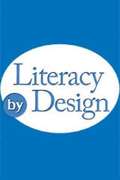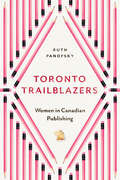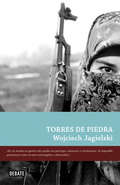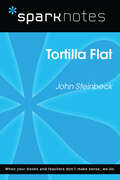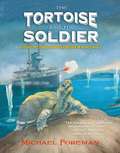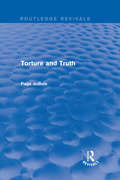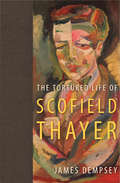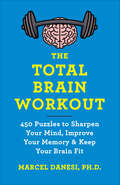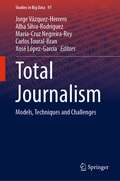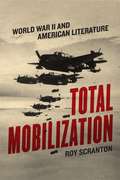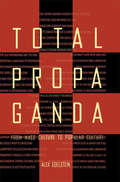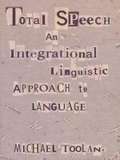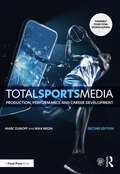- Table View
- List View
The Topography Of Modernity
by Elliott SchreiberKarl Philipp Moritz (d. 1793) was one of the most innovative writers of the late Enlightenment in Germany. A novelist, travel writer, editor, and teacher he is probably best known today for his autobiographical novel Anton Reiser (1785-90) and for his treatises on aesthetics, foremost among them Über die bildende Nachahmung des Schönen (On the Formative Imitation of the Beautiful), published in 1788. In this treatise, Moritz develops the concept of aesthetic autonomy, which became widely known after Goethe included a lengthy excerpt of it in his own Italian Journey (1816-17). It was one of the foundational texts of Weimar classicism, and it became pivotal for the development of early Romanticism. In The Topography of Modernity, Elliott Schreiber gives Moritz the credit he deserves as an important thinker beyond his contributions to aesthetic theory. Indeed, he sees Moritz as an incisive early observer and theorist of modernity. Considering a wide range of Moritz's work including his novels, his writings on mythology, prosody, and pedagogy, and his political philosophy and psychology, Schreiber shows how Moritz's thinking developed in response to the intellectual climate of the Enlightenment and paved the way for later social theorists to conceive of modern society as differentiated into multiple, competing value spheres.
Topoi/Graphein: Mapping the Middle in Spatial Thought (Cultural Geographies + Rewriting the Earth)
by Christian Abrahamsson Gunnar OlssonIn Topoi/Graphein Christian Abrahamsson maps the paradoxical limit of the in-between to reveal that to be human is to know how to live with the difference between the known and the unknown. Using filmic case studies, including Code Inconnu, Lord of the Flies, and Apocalypse Now, and focusing on key concerns developed in the works of the philosophers Deleuze, Olsson, and Wittgenstein, Abrahamsson starts within the notion of fixed spatiality, in which human thought and action are anchored in the given of identity. He then moves through a social world in which spatiotemporal transformations are neither fixed nor taken for granted. Finally he edges into the pure temporality that lies beyond the maps of fixed points and social relations. Each chapter is organized into two subjects: topoi, or excerpts from the films, and graphein, the author’s interpretation of presented theories to mirror the displacements, transpositions, juxtapositions, fluctuations, and transformations between delimited categories. A landmark work in the study of human geography, Abrahamsson’s book proposes that academic and intellectual attention should focus on the spatialization between meaning and its materialization in everyday life.
Topologies as Techniques for a Post-Critical Rhetoric
by Lynda Walsh Casey BoyleThis book restores the concept of topology to its rhetorical roots to assist scholars who wish not just to criticize power dynamics, but also to invent alternatives. Topology is a spatial rather than a causal method. It works inductively to model discourse without reducing it to the actions of a few or resolving its inherent contradictions. By putting topology back in tension with opportunity, as originally designed, the contributors to this volume open up new possibilities for post-critical practice in "wicked discourses" of medicine, technology, literacy, and the environment. Readers of the volume will discover exactly how the discipline of rhetoric underscores and interacts with current notions of topology in philosophy, design, psychoanalysis, and science studies.
Topologies of Fear in Contemporary Fiction: The Anxieties of Post-Nationalism and Counter Terrorism
by Scott McClintockThe central concern of the book is the impact of global terror networks and state counterterrorism on twentieth-century fiction. A unique contribution of this book is the comparative approach, as opposed to the single author focus of most of the edited collections on terrorism in literature.
Topologies of Fear in Contemporary Fiction: The Anxieties of Post-Nationalism and Counter Terrorism
by Scott McClintockThe central concern of the book is the impact of global terror networks and state counterterrorism on twentieth-century fiction. A unique contribution of this book is the comparative approach, as opposed to the single author focus of most of the edited collections on terrorism in literature.
A Topology of Mind: Spiral Thought Patterns, the Hyperlinking of Text, Ideas and More (Mathematics in Mind)
by Robert K. Logan Izabella Pruska-OldenhofThis volume covers many diverse topics related in varying degrees to mathematics in mind including the mathematical and topological structures of thought and communication. It examines mathematics in mind from the perspective of the spiral, cyclic and hyperlinked structures of the human mind in terms of its language, its thoughts and its various modes of communication in science, philosophy, literature and the arts including a chapter devoted to the spiral structure of the thought of Marshall McLuhan. In it, the authors examine the topological structures of hypertext, hyperlinking, and hypermedia made possible by the Internet and the hyperlinked structures that existed before its emergence. It also explores the cognitive origins of mathematical thinking of the human mind and its relation to the emergence of spoken language, and studies the emergence of mathematical notation and its impact on education. Topics addressed include:• The historical context of any topic that involves how mathematical thinking emerged, focusing on archaeological and philological evidence. • Connection between math cognition and symbolism, annotation and other semiotic processes. • Interrelationships between mathematical discovery and cultural processes, including technological systems that guide the thrust of cognitive and social evolution. • Whether mathematics is an innate faculty or forged in cultural-historical context• What, if any, structures are shared between mathematics and language
Topophrenia: Place, Narrative, and the Spatial Imagination (The Spatial Humanities)
by Robert T. Tally Jr.What is our place in the world, and how do we inhabit, understand, and represent this place to others? Topophrenia gathers essays by Robert Tally that explore the relationship between space, place, and mapping, on the one hand, and literary criticism, history, and theory on the other. The book provides an introduction to spatial literary studies, exploring in detail the theory and practice of geocriticism, literary cartography, and the spatial humanities more generally. The spatial anxiety of disorientation and the need to know one's location, even if only subconsciously, is a deeply felt and shared human experience. Building on Yi Fu Tuan's "topophilia" (or love of place), Tally instead considers the notion of "topophrenia" as a simultaneous sense of place-consciousness coupled with a feeling of disorder, anxiety, and "dis-ease." He argues that no effective geography could be complete without also incorporating an awareness of the lonely, loathsome, or frightening spaces that condition our understanding of that space. Tally considers the tension between the objective ordering of a space and the subjective ways in which narrative worlds are constructed. Narrative maps present a way of understanding that seems realistic but is completely figurative. So how can these maps be used to not only understand the real world but also to put up an alternative vision of what that world might otherwise be? From Tolkien to Cervantes, Borges to More, Topophrenia provides a clear and compelling explanation of how geocriticism, the spatial humanities, and literary cartography help us to narrate, represent, and understand our place in a constantly changing world.
Topothesia: Planning, Colonialism, and Places in Excess
by Ameeth VijaySHORTLISTED, 2024 MSA FIRST BOOK PRIZETopothesia reads urban planning as a mode of speculative fiction, one inextricably linked to histories of British colonialism and liberalism through a particular understanding of place. The book focuses on town planning from the late nineteenth century to the present day, showing how the contemporary geography of Britain—sharply unequal and marked by racial division—continues ideologies of place established in colonial contexts. Specifically, planning allows for the speculative construction of future places that are both utopian in their ability to resolve political disagreement and at the same tantalizingly realizable, able to be produced in concrete reality. This speculative imaginary, I argue, is only possible within the ideological framework of colonialism and the history of empire within which it developed. Topothesia refers to a rhetorical device employing the vivid depiction of an often-imaginary place. This device, Vijay shows, helps us understand urban planning as a narrative genre, one that, even in its most mundane documents, is compelled to produce elaborate fantasies of future places. The book examines specific planning movements over time to understand the form and the stakes of their speculative worlds. In building these worlds, the book shows, planners continually coopted literary critiques of the present and reveries of the future, retaining literature's aesthetics while eschewing its politics. At the same time, Vijay shows, writers and artists have dwelled within and against these colonial imaginaries to seek other means of representing place.
Torah and Law in Paradise Lost
by Jason P. RosenblattIt has been the fate of Milton, the most Hebraic of the great English poets, to have been interpreted in this century largely by those inhospitable to his Hebraism. To remedy this lack of balance, Jason Rosenblatt reveals Milton's epic representations of paradise and the fallen world to be the supreme coordinates of an interpretive struggle, in which Jewish beliefs that the Hebrew Bible was eternally authoritative Torah were set against the Christian view that it was a temporary law superseded by the New Testament. Arguing that the Milton of the 1643-1645 prose tracts saw the Hebrew Bible from the Jewish perspective, Rosenblatt shows that these tracts are the principal doctrinal matrix of the middle books of Paradise Lost, which present the Hebrew Bible and Adam and Eve as self-sufficient entities.Rosenblatt acknowledges that later in Paradise Lost, after the fall, a Pauline hermeneutic reduces the Hebrew Bible to a captive text and Adam and Eve to shadowy types. But Milton's shift to a radically Pauline ethos at that point does not annul the Hebraism of the earlier part of the work. If Milton resembles Paul, it is not least because his thought could attain harmonies only through dialectic. Milton's poetry derives much of its power from deep internal struggles over the value and meaning of law, grace, charity, Christian liberty, and the relationships among natural law, the Mosaic law, and the gospel.
Torch the Place: MTC NEXTSTAGE ORIGINAL
by Benjamin LawTeresa's mum finds it impossible to let anything go-from grudges to household objects. She thinks of her home as a museum full of irreplaceable treasures. But she's not really a curator, she's a hoarder, and her house is enough to give Marie Kondo heart palpitations. When her kids return home to celebrate her 60th birthday, she's over the moon to have the family back together. But this isn't a reunion. It's an intervention. Celebrated writer Benjamin Law is one of this country's brightest literary stars. For his hysterically funny and moving stage premiere, Law employs his effortless self-deprecating wit to spark joy in the clutter and find truth in those crazy moments that bring families closer together. Commissioned through MTC's NEXT STAGE Writers' Program with the support of our Playwrights Giving Circle Donors, The Ian Potter Foundation, Naomi Milgrom Foundation, The Myer Foundation, Malcolm Robertson Foundation and The University of Melbourne.
The Torchlight List: Around the World in 200 Books
by Jim FlynnIn today's world it seems that everywhere we turn we are saturated with book recommendations from talk shows, magazines, radio shows, friends, and top ten lists. <P><P>But which books are really the best, and what effects do the books we read have on our intelligence? The Torchlight List has the answers. A professor for over forty years, Jim Flynn was concerned when he saw that his students were reading less and less. He decided to compile a list of recommendations for them, which expanded to include two hundred titles that transport the reader into a magic realm of knowledge and imagination. The books must also shed light on human psychology, history, science, or philosophy: the concepts needed to comprehend the complexities of the modern world.The list, named in honor of Flynn's uncle who read by torchlight onboard a ship during WWI, is divided by geographical area. Flynn offers a brief explanation on the history each book deals with and comments on the plots with humor and wit. He bets each reader that at least one of the five first titles will change his or her life. This is a book that will inspire you to reread books you love, and to discover and relish many new ones.
Tornado
by National Geographic SocietyPete's dog, Tornado, was no ordinary dog. He came in a Tornado, but when his real owners see him, will Pete lose Tornado?
Toronto Trailblazers: Women in Canadian Publishing (Studies in Book and Print Culture)
by Ruth PanofskyThe first-ever study of women in Canadian publishing, Toronto Trailblazers delves into the cultural influence of seven key women who, despite pervasive gender bias, helped advance a modern literary culture for Canada. Publisher Irene Clarke, scholarly editors Eleanor Harman and Francess Halpenny, trade editors Sybil Hutchinson, Claire Pratt, and Anna Porter, and literary agent Bella Pomer made the most of their vocational prospects, first by securing their respective positions and then by refining their professional methods. Individually, each woman asserted her agency by adapting orthodox ways of working within Canadian publishing. Collectively, and perhaps more importantly, their overarching approach emerged more broadly as a feminist practice. Guided by the resolve to make industry-wide improvements, these women disrupted the dominant masculine paradigm and reinvigorated the culture of publishing and authorship in Canada. Through their vision and method these trailblazing women became agents of change who helped transform publishing practice.
Torres de piedra
by Wojciech JagielskiUna impresionante crónica de Wojciech Jagielski sobre la guerra chechena. «En un mundo en guerra solo puedes ser partícipe, voluntario o involuntario. Es imposible permanecer como un mero investigador u observador.» Torres de piedra es un extraordinario reportaje de Wojciech Jagielski sobre uno de los lugares más trágicos y desconocidos del planeta: Chechenia. Los abundantes recursos petrolíferos y el derrumbe de la Unión Soviética en 1991 alimentaron las aspiraciones independentistas de la población chechena y desembocaron en dos sangrientas guerras contra Rusia que se saldaron con más de 150.000 muertos. Este libro retrata la segunda de ellas, iniciada en 1999 como maniobra política para asegurar la elección como presidente de Rusia de un entonces desconocido ex miembro del KGB: Vladímir Putin y cerrada en falso en 2002, con un gobierno títere incapaz de controlar las zonas rebeldes gobernadas por la ley del más fuerte. Jagielski retrata magistralmente Chechenia, sus habitantes y la cruel guerra sostenida por un puñado de guerrilleros desesperados contra el poderoso ejército ruso. Su narración se estructura en torno a los protagonistas principales del conflicto, dos hombres que se lo deben todo a esta guerra: Shamil Basáyev, héroe para algunos y peligroso señor de la guerra para otros, y Aslán Masjádov, un político soberbio y calculador, salvador providencial para una parte de sus compatriotas y cobarde oportunista para el resto. La guerra librada por ambos contra las fuerzas enemigas y sus irresolubles conflictos proporcionan al autor un valiosísimo material sobre el que construir una espléndida y conmovedora alegoría acerca de la guerra y la irreversibilidad de las buenas y malas elecciones. Reseñas:«Este libro de Jagielski alcanza un nuevo nivel en el grupo de descarnadas crónicas sobre uno de los rincones más olvidados de la antigua Rusia y sobre los espantosos daños infligidos a los chechenos tanto por los líderes extranjeros como por los autóctonos. En este relato, las miserias, desgracias y peligros de la cotidianeidad chechena cobran vida con una claridad insoportable.»The Economist «Los reportajes de Wojciech Jagielski ya han sido muy elogiados. Su trabajo más reciente confirmará esa reputación.»Ryszard Kapuscinski
Tortilla Flat (SparkNotes Literature Guide Series)
by SparkNotesTortilla Flat (SparkNotes Literature Guide) by John Steinbeck Making the reading experience fun! Created by Harvard students for students everywhere, SparkNotes is a new breed of study guide: smarter, better, faster. Geared to what today's students need to know, SparkNotes provides: *Chapter-by-chapter analysis *Explanations of key themes, motifs, and symbols *A review quiz and essay topicsLively and accessible, these guides are perfect for late-night studying and writing papers
The Tortoise and the Soldier: A Story of Courage and Friendship in World War I
by Michael ForemanWhile fighting for England in World War I, Henry Friston sees extraordinary sights--foreign lands and fighting armies and oceans that stretch to the horizon. But it's while under fire in the trenches at Gallipoli that he sees the most extraordinary sight of all: a tortoise. Inspired, he discovers the strength he needs to survive, and, together, he and his tortoise escape the battle. So begins the friendship of a lifetime.
Torture and Truth (New Ancient World Ser.)
by Page duBoisFirst published in 1991, this book — through the examination of ancient Greek literary, philosophical and legal texts — analyses how the Athenian torture of slaves emerged from and reinforced the concept of truth as something hidden in the human body. It discusses the tradition of understanding truth as something that is generally concealed and the ideas of ‘secret space’ in both the female body and the Greek temple. This philosophy and practice is related to Greek views of the ‘Other’ (women and outsiders) and considers the role of torture in distinguishing slave and free in ancient Athens. A wide range of perspectives — from Plato to Sartre — are employed to examine the subject.
The Tortured Life of Scofield Thayer
by James DempseyThe influential literary magazine The Dial is regarded as a titanic artistic and aesthetic achievement for having published most of the great modernist writers, artists, and critics of its day. As publisher and editor of The Dial from 1920 to 1926, Scofield Thayer was gatekeeper and guide for the movement, introducing the ideas of literary modernism to America and giving American artists a new audience in Europe.In The Tortured Life of Scofield Thayer, James Dempsey looks beyond the public figure best known for publishing the work of William Butler Yeats, T. S. Eliot, William Carlos Williams, E.E. Cummings, and Marianne Moore to reveal a paradoxical man fraught with indecisions and insatiable appetites, and deeply conflicted about the artistic movement to which he was benefactor and patron. Thayer suffered from schizophrenia and faded from public life upon his resignation from The Dial. Because of his mental illness and controversial life, his guardians refused to allow anything of a personal nature to appear in previous biographies. The story of Thayer's unmoored and peripatetic life, which in many ways mirrored the cosmopolitan rootlessness of modernism, has never been fully told until now.
The Total Brain Workout: 450 Puzzles to Sharpen Your Mind, Improve Your Memory & Keep Your Brain Fit
by Marcel DanesiHave fun and flex your mental muscle with brainteasers, word searches, cryptograms, optical illusions, sudoku, frameworks, logic puzzles, trivia and more.Did you know that different parts of your brain control different functions, and that with exercise, you can make each part of your brain stronger?In The Total Brain Workout you’ll find 450 fun, challenging and absorbing puzzles designed to specifically target the core parts of your brain that control language, logic, memory, reasoning and visual perception. Each set of puzzles ranges from easy to challenging, and is presented with information on the area of your brain being targeted and the functions it controls, so you can customize your own workout to the specific areas you want to improve.
Total Journalism: Models, Techniques and Challenges (Studies in Big Data #97)
by Xosé López-García Jorge Vázquez-Herrero Alba Silva-Rodríguez Carlos Toural-Bran María-Cruz Negreira-ReyThis book aims to explore the diverse landscape of journalism in the third decade of the twenty-first century, constantly changing and still dealing with the consequences of a global pandemic. ‘Total journalism’ is the concept that refers to the renewed and current journalism that employs all available techniques, technologies, and platforms.Authors discuss the innovative nature of journalism, the influence of big data and information disorders, models, professionals and audiences, as well as the challenges of artificial intelligence. The book gives an up-to-date overview of these perspectives on journalistic production and distribution. The effects of misinformation and the challenge of artificial intelligence are of specific relevance in this book.Readers can enjoy with contributions from prestigious experts and researchers who make this book an interesting resource for media professionals and researchers in media and communication studies.
Total Mobilization: World War II and American Literature
by Roy ScrantonSince World War II, the story of the trauma hero—the noble white man psychologically wounded by his encounter with violence—has become omnipresent in America’s narratives of war, an imaginary solution to the contradictions of American political hegemony. In Total Mobilization, Roy Scranton cuts through the fog of trauma that obscures World War II, uncovering a lost history and reframing the way we talk about war today. Considering often overlooked works by James Jones, Wallace Stevens, Martha Gellhorn, and others, alongside cartoons and films, Scranton investigates the role of the hero in industrial wartime, showing how such writers struggled to make sense of problems that continue to plague us today: the limits of American power, the dangers of political polarization, and the conflicts between nationalism and liberalism. By turning our attention to the ways we make war meaningful—and by excavating the politics implicit within the myth of the traumatized hero—Total Mobilization revises the way we understand not only World War II, but all of postwar American culture.
Total Propaganda: From Mass Culture To Popular Culture (Routledge Communication Series)
by Alex S. EdelsteinBLURB FOR TOTAL PROP MAILER................ Total Propaganda moves the study of propaganda out of the exclusive realm of world politics into the more inclusive study of popular culture, media, and politics. All the participatory functioning elements of the society are aspects of membership in the popular culture. Thus, the values of popular music, media, politics, debates over social issues, and even international trade become everyday propaganda to which everyone may relate. To emphasize the necessity for new thinking about propaganda, Edelstein creates the concepts of the new propaganda and the old, and he devises a language of "uninyms" to convey their meanings more quickly. "Oldprop" is characteristic of mass cultures and utilizes totalitarian methods of conflict, hegemony, minimization, demonization, and exclusiveness to achieve its goals. By contrast, "newprop" is created by members of the popular culture to allow them to engage in accomodation, enhance the individual, and promote inclusiveness. Shifts in the old and the new propaganda are tracked across social issues such as race, religion, sexuality, gender, gun control, and the environment, as well as in fashion, politics, advertising, sports, media, and politics. Central to the concept of total propaganda is that it is not simply additive; it is the product of new energies that are produced by the fusing of propaganda in such related forums as music, art, advertising, sports and politics. It is these synergies, and their production of new energies, that make total propaganda greater than the sum of its parts. Edelstein concludes that the most important distinction that should be drawn between mass culture and popular culture is its text; i.e., its propaganda. In a popular culture, everyone creates and consumes propaganda; in a mass culture almost everyone consumes it but only a few create it. This formulation offers new ways to discuss power and ideology in media texts. As an example, where once the least informed and the least educated were the most subject to propaganda, now the most informed and most educated often are the first to create propaganda and the first to consume it. FORMER BLURB COPY.......It is widely recognized that the mass media provide us with ample information which we use to construct some sense of the world around us. It is not as widely recognized that consumers of media messages are active in this constructive process, making meanings that are sensible to them in particular life circumstances. The media target a younger, more media savvy generation who are more likely to be participants in the messages than members of any previous generation. This participatory aspect of new media is central to what the author defines as the new propaganda. Although critical and cultural theories are often prohibitive for undergraduate students, the author's formulation offers an accessible way to discuss power and ideology in media texts. Without using the critical discourse, he provides compelling arguments that power and ideology are created and maintained through the active participation of audience members. The conceptualization of the old and new propagandas helps move the study of propaganda out of the realm of world politics into the study of popular culture. The author views all of the participatory functioning of the society as aspects of membership in a more embracing popular culture. This point of view recognizes that the mass media are extremely important forces in the consumer's construction of reality and that they are no longer exclusive channels for disseminating the messages of the powerful elites. Instead, the media -- particularly the new media -- are accessible to and used frequently by less powerful members of society -- children, ethnic minorities, and marginal members of society -- to create realities that more satisfactorily fulfill their needs. NEW BLURB COPY FOR GENERAL CATALOGS... Total Propaganda is a fresh answer to the question of the inclusiveness of the popular culture. It demonstrates how the values of popular
Total Speech: An Integrational Linguistic Approach to Language
by Michael ToolanUnits, rules, codes, systems: this is how most linguists study language. Integrationalists such as Michael Toolan, however, focus instead on how language functions in seamless tandem with the rest of human activity. In Total Speech, Toolan provides a clear and comprehensive account of integrationalism, a major new theory of language that declines to accept that text and context, language and world, are distinct and stable categories. At the same time, Toolan extends the integrationalist argument and calls for a radical change in contemporary theorizing about language and communication.In every foundational area of linguistics--from literal meaning and metaphor to the nature of repetition to the status of linguistic rules--Toolan advances fascinating and provocative criticisms of received linguistic assumptions. Drawing inspiration from the writings of language theorist Roy Harris, Toolan brings the integrationalist perspective to bear on legal cases, the reception of Salman Rushdie, poetry, and the language of children. Toolan demonstrates that the embeddedness of language and the situation-sensitive mutability of meaning reveal language as a tool for re-fashioning and renewal.Total Speech breaks free of standard linguistics' fascinated attraction with "cognitive blueprints" and quasi-algorithmic processing to characterize language anew. Toolan's reflections on the essence of language, including his important discussion of intention, have strong implications for students and scholars of discourse analysis, literature, the law, anthropology, philosophy of language, communication theory, and cognitive science, as well as linguistics.
Total Sports Media: Production, Performance and Career Development
by Marc Zumoff Max NeginThis thoroughly revised second edition of Total Sports Media (formerly Total Sportscasting) offers a complete guide to sports media across TV, radio and digital broadcasting. Covering everything from practical skills to industry lingo, this book guides readers through each aspect of the sportscasting process, including performance and production techniques, demo reel production, and writing for sports media. Chapters feature interviews with successful sports media professionals who take you inside the real-world practices of the industry, offering invaluable insights on how to carve out a career in the field and forge lasting relationships with team personnel. New to this edition are a discussion of changes in the industry as a result of the Covid-19 pandemic, updated sections on career paths and professional development opportunities, and an updated chapter on social media strategies for sportscasters. This book also delves into the unique issues facing women and minority sportscasters. Finally, the authors look at the history of sports media and discuss the future of the industry. Total Sports Media is an essential resource for both students and instructors of sports media, as well as for industry professionals interested in a wide-reaching look at this changing field. A companion website features additional resources for instructors and students, including video and audio examples and links to additional resources.
